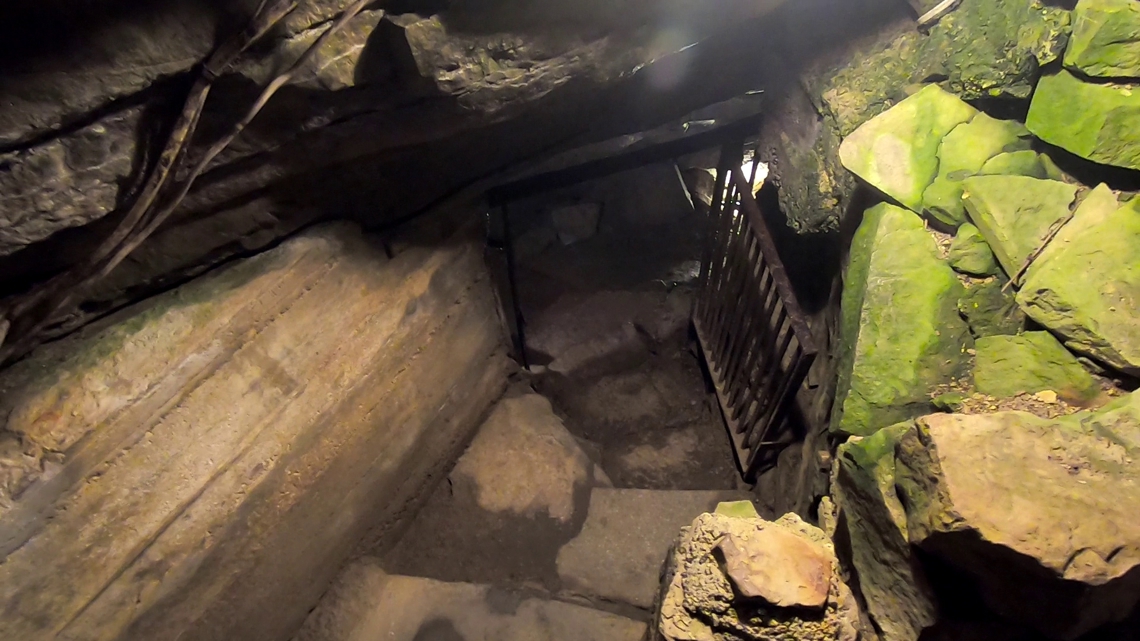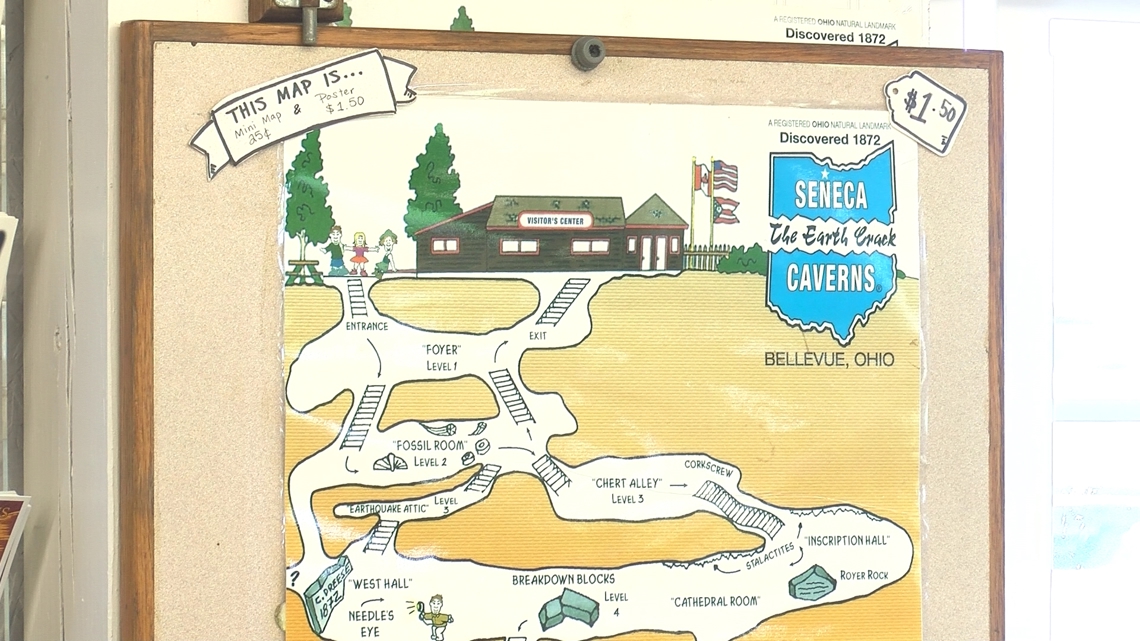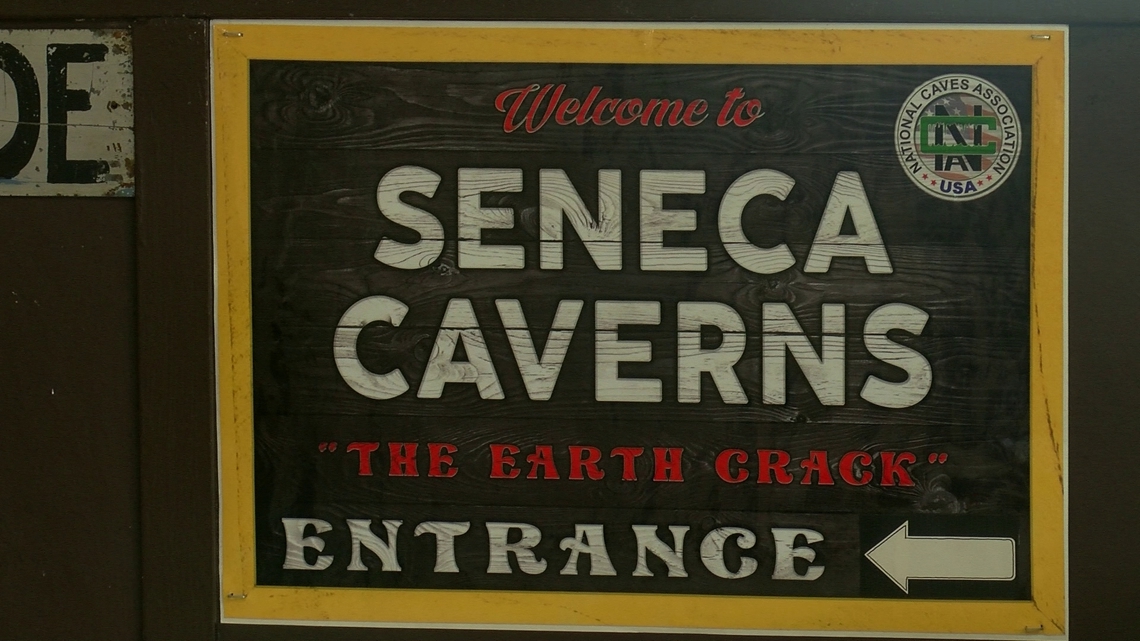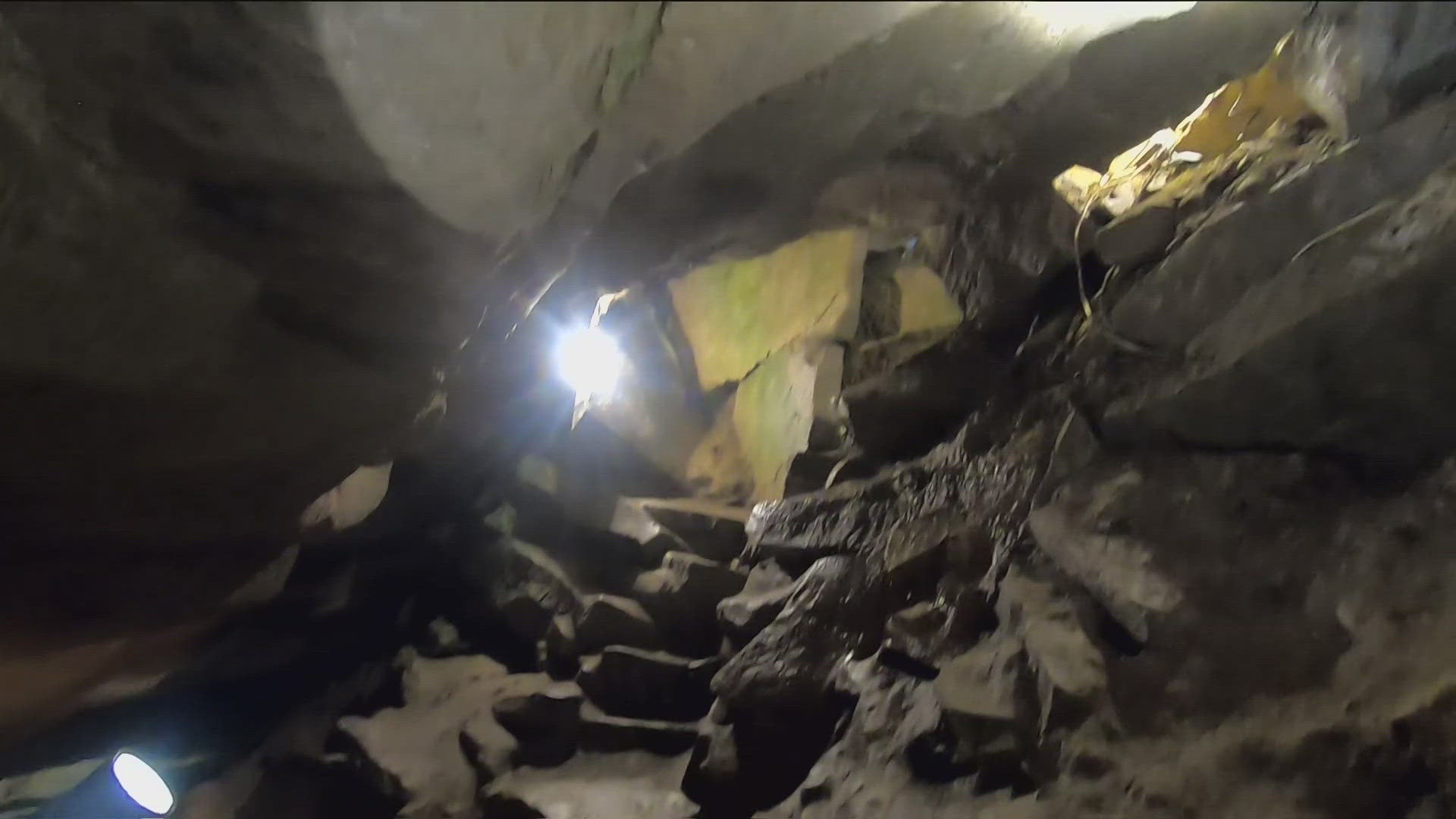BELLEVUE, Ohio — In 1872, two boys were out hunting rabbits. Suddenly, their dog and the rabbit disappeared into the ground.
That's when — and how — the Seneca Caverns were discovered, according to owner and operator Denise Bell.
It wasn't until the late 1800s when a man named Dunlap from Fremont took over, and tours of the caverns were opened to the public.
"At that time, no stairs were built, nothing like that," Bell said. "People had to tie a rope around the cherry tree that was at the entrance of the cave, and then around themselves. Then they were lowered into the cave."
However, in 1933, Don and Fanny Bell took over ownership from Dunlap and the Seneca Caverns became a tourist destination.


Over the last 150 years, Bell said the caverns have had over a million visitors.
However, the origin of the cave is much older and pairs history with science.
“It was formed probably by solution over time of dissolving the gypsum that was at a depth low down in the ground," Bell said. "So as the gypsum dissolved, it created an opening and space, so the rock sitting on top had nowhere to go but down. So we are now walking on what fell."
The caverns are connected to a system of underground rivers. All of it is a part of the karst area, which is characterized by sinkholes, sinking streams, caves, springs and more in the Bellevue area.


"The underground river is probably one of several underground rivers in the area," Bell said. "So in this area here, which is north of Attica, Ohio, and flowing north to Sandusky Bay, there are no surface rivers or streams in that area. It all happens underground."
Bell said that included in that science is temperature. She said the caves stay consistently at 54 degrees year-round, a result of the area's mean annual temperature.
"Fanny would be sitting at the entrance to the cave, it was a sinkhole entrance, because there would be nice cool air coming out of the cave," Bell said. "She had her table, which we still have out here in the shop, and sit there and sell tickets from there."
Bell said this summer, they have had a lot of people visiting to get back to nature.
“There’s so much here if you’re thinking in terms of if you like history, we have a lot of history, biology, geology, there are things that go on in this area with the sinkholes, and the sinking springs and the streams, and you can see that all here," Bell said.


One guest, Kristen Montgomery, was visiting with her family on their way back from Cedar Point.
“So we decided to stop and it was really actually cool. I’ve never been in a cave or anything before, it’s my first time," Montgomery said. "Definitely recommend it. It was interesting, just all of the different types of rock they have down there."
Due to the way the cave formed, there are naturally eight different levels, with the bottom leading to the mouth of the underground river.
“With just how far it goes down, it’s amazing," Montgomery said. "Because you don’t realize you’re like, oh, 120 feet under right now."
The Seneca Caverns are open seven days a week, and Bell said there's something for everyone inside and outside of the caves.
For more information, check out senecacavernsohio.com.



